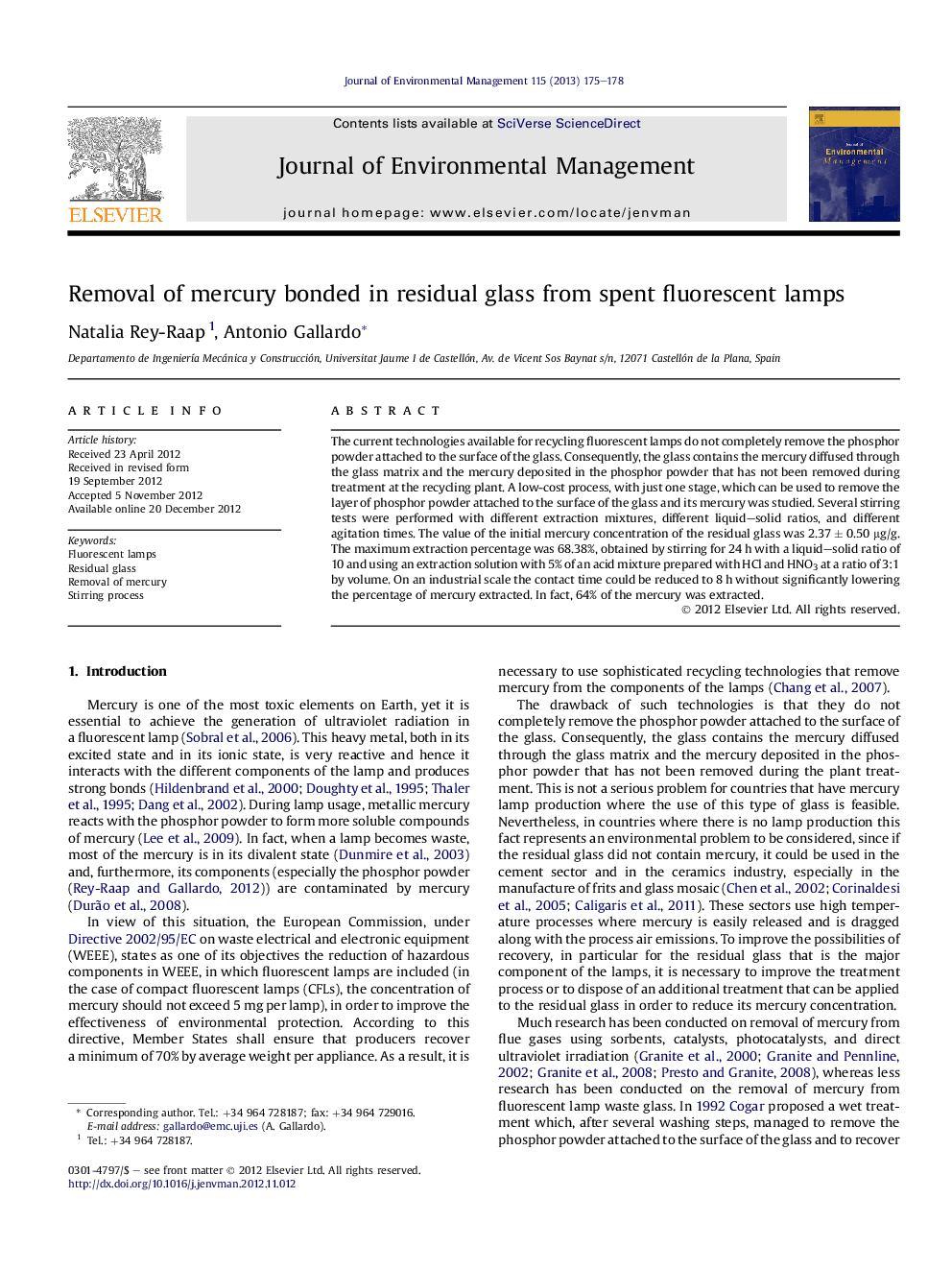| Article ID | Journal | Published Year | Pages | File Type |
|---|---|---|---|---|
| 1056237 | Journal of Environmental Management | 2013 | 4 Pages |
The current technologies available for recycling fluorescent lamps do not completely remove the phosphor powder attached to the surface of the glass. Consequently, the glass contains the mercury diffused through the glass matrix and the mercury deposited in the phosphor powder that has not been removed during treatment at the recycling plant. A low-cost process, with just one stage, which can be used to remove the layer of phosphor powder attached to the surface of the glass and its mercury was studied. Several stirring tests were performed with different extraction mixtures, different liquid–solid ratios, and different agitation times. The value of the initial mercury concentration of the residual glass was 2.37 ± 0.50 μg/g. The maximum extraction percentage was 68.38%, obtained by stirring for 24 h with a liquid–solid ratio of 10 and using an extraction solution with 5% of an acid mixture prepared with HCl and HNO3 at a ratio of 3:1 by volume. On an industrial scale the contact time could be reduced to 8 h without significantly lowering the percentage of mercury extracted. In fact, 64% of the mercury was extracted.
► Mercury concentration in the residual glass is high enough for the industrial sector. ► A low-cost process with just one stage could be applied to reduce the concentration. ► By stirring with an acid solution the concentration of mercury decreases by 68.38%. ► Optimal operating conditions on an industrial scale would be obtained by stirring 8 h.
